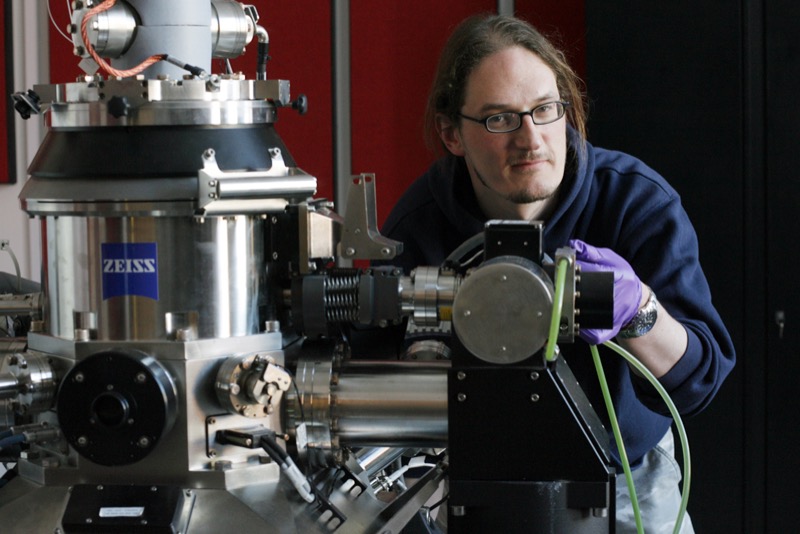AMBER Researcher Awarded €2.2 million in European Funding
Posted on: 19 April 2016
Jonathan Coleman, AMBER’s Principal Investigator and Professor in the School of Physics, Trinity College Dublin has been announced as a recipient of the European Research Council’s (ERC) Advanced Grants. The prestigious ERC Advanced Grants are only made to Europe’s most distinguished researchers. The awards recognise scientists who are working on cutting-edge research and who truly push the frontiers of knowledge. Professor Coleman’s grant of €2.2 million will support and grow his research group for the next five years.

Professor Michael Morris, Director of AMBER said, “This award is great recognition of the work being done by Professor Coleman and his team to develop next generation materials. Ireland has built up its expertise in the area of nano and materials science which is globally recognised, as evidenced by the increasing number of international research grants we are attracting. Ireland is beginning to take a globally recognised leadership position in this field of research and scientists of the calibre of Professor Coleman are critical to building our reputation in this area.”
The research grant is based on Professor Coleman’s work on novel methods to use liquid exfoliation to develop printed electronics using 2D materials. In the future, even the most mundane objects will contain electronic circuitry allowing them to gather, process, display and transmit information. The resulting vast network, often called the Internet of Things, will revolutionise society. To realise this will require the ability to produce electronic circuitry extremely cheaply, often on unconventional substrate. This will be achieved through printed electronics, by the assembly of devices from solution (i.e. ink) using methods adapted from printing technology.
The aim of his research is to take liquid dispersions of nanosheets and by carefully tuning the liquid properties optimise them for use as inks. These nano-structured inks can be printed onto surfaces using standard printers to form patterned networks of nanosheets. By combining networks of different types of nanosheets, it will be possible to print fully functional electronic devices where every component including electrodes, active material, dielectrics and electrolytes has been printed from a specific type of nanosheets. In this way photodetectors, transistors, solar cells and supercapacitors can be printed allowing the development of cheap yet high performance electronic circuitry which will allow everything from packaging to clothing to gather, process, display and exchange information. Many believe that by 2020, such chips could be in >20 billion objects making the vast majority of internet connections.
Professor Jonathan Coleman said “We’re delighted with the award. We believe recent developments in liquid exfoliation of 2D nanosheets have given us the ideal family of materials to revolutionise electronic ink production. This funding will help enable us to develop methods to transform large volume suspensions of exfoliated nanosheets into bespoke 2D inks with properties engineered for a range of specific printed device applications such as transistors and solar cells. This means that the consumer/industry will have access to a much broader range of information than before. Information will be personalised. Not only will your smartphone be able to check the news, it will be able to check if the milk in your fridge is fresh”.
This ERC grant follows Professor Coleman’s previous ERC grant which studied the production of inorganic 2D nanosheets by liquid exfoliation and will allow him to employ four post-doctoral researchers and two PhD students.
Professor Coleman’s work has been published in prestigious international journals such as Science, Nature, Nature Nanotechnology, and Advanced Materials, as well as featuring in New Scientist, the New York Times and on CNN. In 2011 he was recognised as one of the top 100 material scientists of the last decade – the only Irish representative and one of the youngest on the list.
